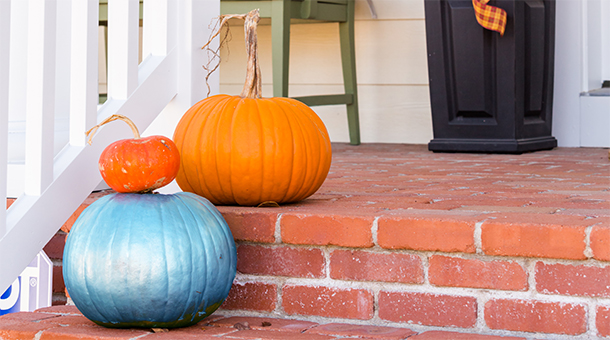The Medical Minute: The trick to finding allergy-safe Halloween treats

Hershey bars, Snickers and Reese's may be trick-or-treat night staples, but for children who have food allergies, these type of treats can be dangerous.
As professionals debate why more children have food allergies these days compared to decades ago, sensitivity to the issue has spread to classrooms and cafeterias nationwide.
Now awareness has arrived for Halloween.
Dr. Tracy Fausnight, a pediatric allergist and immunologist at Penn State Hershey Children's Hospital, said the most common food allergies for young children are milk, egg and peanut.
Children with milk allergies cannot eat most types of chocolate, while those who are allergic to peanuts must steer clear of candy bars that contain the nuts. Kids with egg allergies need to avoid nougats in candy bars such as Milky Way or Three Musketeers. Even chewy SweeTARTS and Laffy Taffy candies have egg in them.
While some families of children with food allergies choose not to go trick-or-treating, many have come up with strategies to let the kids have fun while still staying safe.
Older children who understand their condition can dump out their collection and swap unsafe candies for safe ones. Parents of younger kids may allow their child to have the experience of dressing up to go door-to-door, but then they trade the collection for treats their child can eat.
Because most of the candy given out during trick-or-treat events is individually wrapped, there is little risk of cross-contamination from sitting next to other wrapped candy. “Hopefully parents are looking at the Halloween candy anyway to make sure anything their child is going to eat is sealed and intact,” Fausnight said.
Labels warning that an item was manufactured in a facility that also processes items that may contain allergens are not a good indicator of whether an item is safe or not.
“They have no real meaning and are not supported by the FDA,” Fausnight said. “One item may have something in it and another may not – it's sort of random. The companies put it on mostly to protect themselves, but you just don't know. The most conservative approach for children with food allergies is to avoid foods marked with cross-contamination labeling.”
Those who enjoy having little ghosts and goblins visit them may want to consider changing up their cache of goodies to include items that are safe for children with most food allergies. Those include Skittles, Smarties, Starburst, Dum Dums and Haribo gummy bears. Plain potato chips are also usually OK.
Non-food treats such as stickers, pencils, bubbles, crayons, friendship bracelets, bouncy balls and bookmarks are also typically well-received by princesses and superheroes alike.
Last fall, the Food Allergy Research & Education nonprofit group launched a national campaign called The Teal Pumpkin Project to raise awareness of food allergies and promote the inclusion of all children in the trick-or-treat tradition of Halloween.
The organization invites people to take a pledge to offer non-food treats for trick-or-treaters, and to place a teal pumpkin or free printable sign in front of their home to indicate it is a safe location for children with allergies. For details, visit www.foodallergy.org.
The Medical Minute is a weekly health news feature produced by Penn State Milton S. Hershey Medical Center. Articles feature the expertise of Penn State Hershey faculty physicians and staff, and are designed to offer timely, relevant health information of interest to a broad audience.
If you're having trouble accessing this content, or would like it in another format, please email Penn State Health Marketing & Communications.
